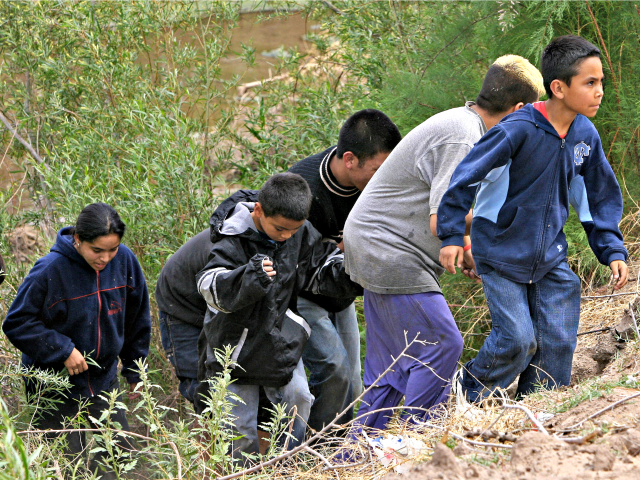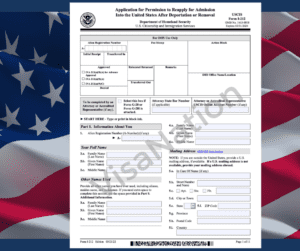Florida Grand Jury Issues Shocking Report on Alien Kids
A Florida grand jury convened, in part, to examine the smuggling and release of unaccompanied alien children (UACs), issued its “Third Presentment” — essentially a recap of its findings on that subject thus far — on March 29. Those findings shockingly expose a system that is largely indifferent to the alien kids that it’s designed to benefit — and how U.S. laws meant to protect those kids are doing anything but.
The Grand Jury. On June 17, Florida Governor Ron DeSantis (R) used his authority to ask the state’s Supreme Court for an order empaneling a statewide grand jury to examine various immigration-related “crimes and wrongs” that residents and local officials there may have engaged in. The targets are family members who paid smugglers to bring UACs unlawfully into the United States, and the government of Miami-Dade County — which allegedly is refusing to honor DHS detainers for certain seriously bad criminal aliens.
On June 29, the state Supreme Court issued an order directing the empanelment of the statewide grand jury DeSantis had granted. Presiding is Ellen S. Masters, chief judge of the state’s Tenth Judicial Circuit.
The jury itself is identified as the “Twenty-First Statewide Grand Jury”, and as the third presentment explains, it consists of “a group of Florida residents who come from varied backgrounds”, including “educators, retirees, veterans, businesspeople, and homemakers”.
UACs, the Homeland Security Act of 2002, and Section 235 of the TVPRA. Hovering in the background of the third presentment are two laws Congress has passed in the last two decades.
The first is the Homeland Security Act of 2002 (HSA), which at section 462 defined the term “unaccompanied alien child” as:
a child who — (A) has no lawful immigration status in the United States; (B) has not attained 18 years of age; and (C) with respect to whom — (i) there is no parent or legal guardian in the United States; or (ii) no parent or legal guardian in the United States is available to provide care and physical custody.
As that definition makes clear, only alien minors without parents or legal guardians in the United States are considered UACs, but nonetheless, the federal government — and DHS in particular, lumps in plenty of kids with parents and guardians here illegally as UACs.
As its name suggests, the HSA was the law that created DHS, but prior to the establishment of that department, the former Immigration and Naturalization Service (INS) had responsibility for detaining, caring for, and releasing alien children.
It’s the “former INS” because it was abolished in section 471 of the HSA, when its immigration responsibilities were dispersed among various other agencies at DHS, including CBP, ICE, and USCIS.
Responsibility over the detention, care, and release of UACs wasn’t retained by any agency within the newly created DHS, however. An amendment to the HSA transferred authority over those children to the Office of Refugee Resettlement (ORR) within the Department of Health and Human Services.
It’s not clear why jurisdiction over UACs was transferred to ORR, an office that to that point had little experience in detaining, caring for, or releasing anyone, let alone children. There was little discussion about the amendment itself, and no discussion at all as to why ORR was a better fit than ICE, which did retain jurisdiction over the detention of aliens generally for immigration purposes.
That said, many aliens and immigrants’ advocates had been critical of the manner in which INS dealt with alien children, so the sponsors likely assumed that placing those children anyplace else was a better choice. The grand jury’s findings belie that assumption.
In the first few years this new protocol was in place, not many UACs were affected. According to the Congressional Research Service (CRS), the number of UACs apprehended by DHS and referred to ORR in the early 2000s “averaged 6,700 annually and ranged from a low of about 4,800 in FY 2003 to a peak of about 8,200 in FY 2007”.
That quickly changed, however, after Congress passed the Trafficking Victims Protection Reauthorization Act of 2008 (TVPRA).
Section 235 of the TVPRA separated UACs into two groups: (1) children from “contiguous” countries (Canada and Mexico); and (2) minor nationals of “non-contiguous” countries (everywhere else).
Under that provision, a UAC from a contiguous country can be returned home if the child has not been trafficked and does not have a credible fear of return.
UACs from non-contiguous countries, however, must be transferred to the care and custody of ORR within 72 hours and placed into formal removal proceedings (UACs are not amenable to expedited removal), even if they have not been trafficked and have no fear of return. ORR is then directed to place most of those children with “sponsors” in the United States.
Not surprisingly, after Congress passed that provision, the number of UACs from non-contiguous countries soared, as parents (and more importantly smugglers) realized that section 235 of the TVPRA all but guaranteed that any child who could make it illegally into the United States would be released into this country to rejoin his or her family.
Here are the statistics: According to CRS, in FY 2008, the fiscal year before the TVPRA was passed, CBP encountered fewer than 10,000 UACs at the Southwest border.
By FY 2009, when that bill was signed, that figure rose to around 20,000 UACs, 82 percent of them Mexican nationals, and just 17 percent from the non-contiguous “Northern Triangle” countries of El Salvador, Guatemala, and Honduras.
The number of UACs entering illegally kept growing thereafter, with Border Patrol apprehending more than 68,500 of them in FY 2014. By that point, however, just 23 percent of UACs came from Mexico and 77 percent from the Northern Triangle.
Any objective observer would conclude from reviewing these statistics that section 235 of the TVPRA created a gap in our laws that is now being exploited by those seeking to bring UACs to the United States illegally (smugglers, parents, other relatives, traffickers, the children themselves, etc.).
The logic was obvious even to the editorial board at the Washington Post, which in August 2014 stated: “Inadvertently, [the TVPRA] has encouraged thousands of Central American children to try to reach the United States by granting them access to immigration courts that Mexican kids don’t enjoy.”
That was two months after President Obama wrote a letter to congressional leaders asking them to reform the system and provide “the DHS Secretary additional authority to exercise discretion in processing the return and removal of unaccompanied minor children from non-contiguous countries like Guatemala, Honduras, and El Salvador”.
Congress failed to act, and both the amendments in the HSA and in section 235 of the TVPRA remain in place today.
The Grand Jury and UACs. The formal title of the most recent release from the grand jury is “The Third Presentment of the Twenty-First Statewide Grand Jury Regarding Unaccompanied Alien Children (UAC)”, and the jurors explain at the outset that it “touches on an issue of singular importance to us all: the process whereby [UACs] are brought into our State and, in too many cases, left to an uncertain fate”.
The presentment is long (46 pages, single-spaced, with multiple footnotes), but helpfully the jurors summarize their findings on page one:
If one reads no further, we hope this will make our findings clear: If any resident of Florida exposed U.S.-born children to this process, they would be justifiably arrested for child neglect or worse. We do not think children should be less-protected simply because they were born outside our borders and brought here by a government agency.
The jurors admit that like many outside observers, they “had no pre-existing knowledge about how UAC are processed, how their sponsors are selected, how they arrive in Florida, and how they are cared for upon arrival”. Tellingly, they noted:
The public is led to believe that the process described by our federal government in documents and popular media accounts at least resembled the truth. ORR asserts that children fleeing from danger are adequately identified, properly cared for, and reunited with their family here in this country.
They were quickly disabused of that notion, and are now heaping blame on ORR, in somewhat graphic but appropriate terms:
In reality, ORR is facilitating the forced migration, sale, and abuse of foreign children, and some of our fellow Florida residents are (in some cases unwittingly) funding and incentivizing it for primarily economic reasons. These entities encourage UAC to undertake and/or be subjected to a harrowing trek to our border, ultimately abandoning significant numbers of those who survive the journey to an uncertain fate with persons who are largely unvetted. This process exposes children to horrifying health conditions, constant criminal threat, labor and sex trafficking, robbery, rape, and other experiences not done justice by mere words. [Emphasis added.]
They next offered a warning to their fellow Floridians (some still innocent and well-meaning, others not so much):
Those here in Florida who are sending money and other aid to facilitate this process should know what it is they are funding. At nearly every juncture, travelers forging the Darien Gap and other notorious routes must pay handlers, armed militia groups, native tribes, local warlords, gangs, or drug cartels hoping to obtain safe passage. In many cases the toll is exacted in lives, labor, or sexual abuse. They face disease, famine, drought, a perilous jungle trek, insects, and predators both human and animal. [Emphasis added.]
Quantifying the human toll of this harrowing UAC smuggling journey, and the inhumanity of the smugglers themselves, the jurors reference a July 2022 survey completed by the Florida Department of Children and Families (DCF).
DCF had interviewed 49 of the 13,000 UACs who arrived in Florida in 2022, in what were referred to as “just two Florida placements”. The department found that:
The children interviewed knew very little about the individuals that transported them during their journey to the border [and] disclosed that the individuals who transported them were “Coyotes.” One child disclosed that during her journey several members of her group were robbed, attacked by gang members, decapitated, and raped. The child disclosed that she was one of the victims of rape. [Emphasis added.]
The horrors faced by UACs don’t necessarily end on this side of the border, as the jurors explained, because some of those children:
are coerced into prostitution or sexual slavery; some are recycled to be used as human visas by criminal organizations; some are consigned to relatives who funnel them into sweatshops to pay off the debt accumulated by their trek to this country; some flee their sponsors and return to their country of origin; some are abandoned by their so-called families and become wards of the dependency system, the criminal justice system, or disappear altogether.
After detailing such hells and degradations, the jurors then turn their fire, again, toward ORR:
Meanwhile, ORR’s efforts and resources are less-directed at preventing or remedying any of these maladies, and instead appear fully focused on maximizing the number of children they can process, heedless of the downstream consequences to either the children or the communities into which they are jettisoned.
According to the grand jurors, ORR is aided and abetted in these endeavors by outside groups, which they portray in rather unfavorable terms:
ORR — armed with a budget of billions of taxpayer dollars and working with activists and nonprofit organizations’ which receive hundreds of millions of dollars in grant monies, hold millions in assets, and pay cadres of executives salaries in the hundreds of thousands of dollars — is handling thousands of foreign children in a dangerous manner.
The jurors also offer a retort to those who contend that such horrific abuses of UACs as rapes, forced prostitution, debt bondage, and sweatshop labor occur only in extremely isolated instances:
We understand that one of the typical defenses of this process is that only a small number of children fall prey to any of these misfortunes. To that we say two things: (1) this is a false trope, presented either by those who are utterly ignorant of reality or those who would see the current conditions continue- the number and percentage of UAC experiencing problematic scenarios is not small by any stretch; and (2) even one such easily preventable case is unacceptable. [First emphasis added.]
One Caveat, but … I will offer one caveat: Grand jurors only hear one side of the story, the one offered by the prosecutor.
That said, however, the jurors seem to be properly placing the mounds of evidence they have received (“more than five months questioning, learning, listening, reviewing, reading, and discussing dozens of witnesses, streams of video, gigabytes of data, and reams of paper”) into a reasonable context in their findings.
The only reason why the HSA and TVPRA — which expose children to unconscionable dangers and humiliations — have gone unamended for so long is that: (1) the UAC issue is complicated; and (2) easily demagogued (as Donald Trump learned to his disadvantage at the last presidential debate, and numerous times prior).
The press has done little to inform the public discourse on the issue, either. No one — no one — wants to be seen as heartless and uncaring when it comes to the most vulnerable innocents, and so (perversely and consequently), those innocents are deliberately exposed to mounting instances of cruelty.
The grand jury quotes Teddy Roosevelt — Rough Rider, president, reformer, and recipient of both the Nobel Peace Prize and Medal of Honor — who stated: “The most unpleasant truth is a safer companion than a pleasant falsehood”.
Americans have been living with the “pleasant falsehood” that alien children are safe and well-cared-for under our laws. The Florida grand jury goes a long way to debunking that claim by puncturing various harmful tropes to reveal many important but “unpleasant” truths. While their work is just beginning, Congress needs to read this presentment, and act.






